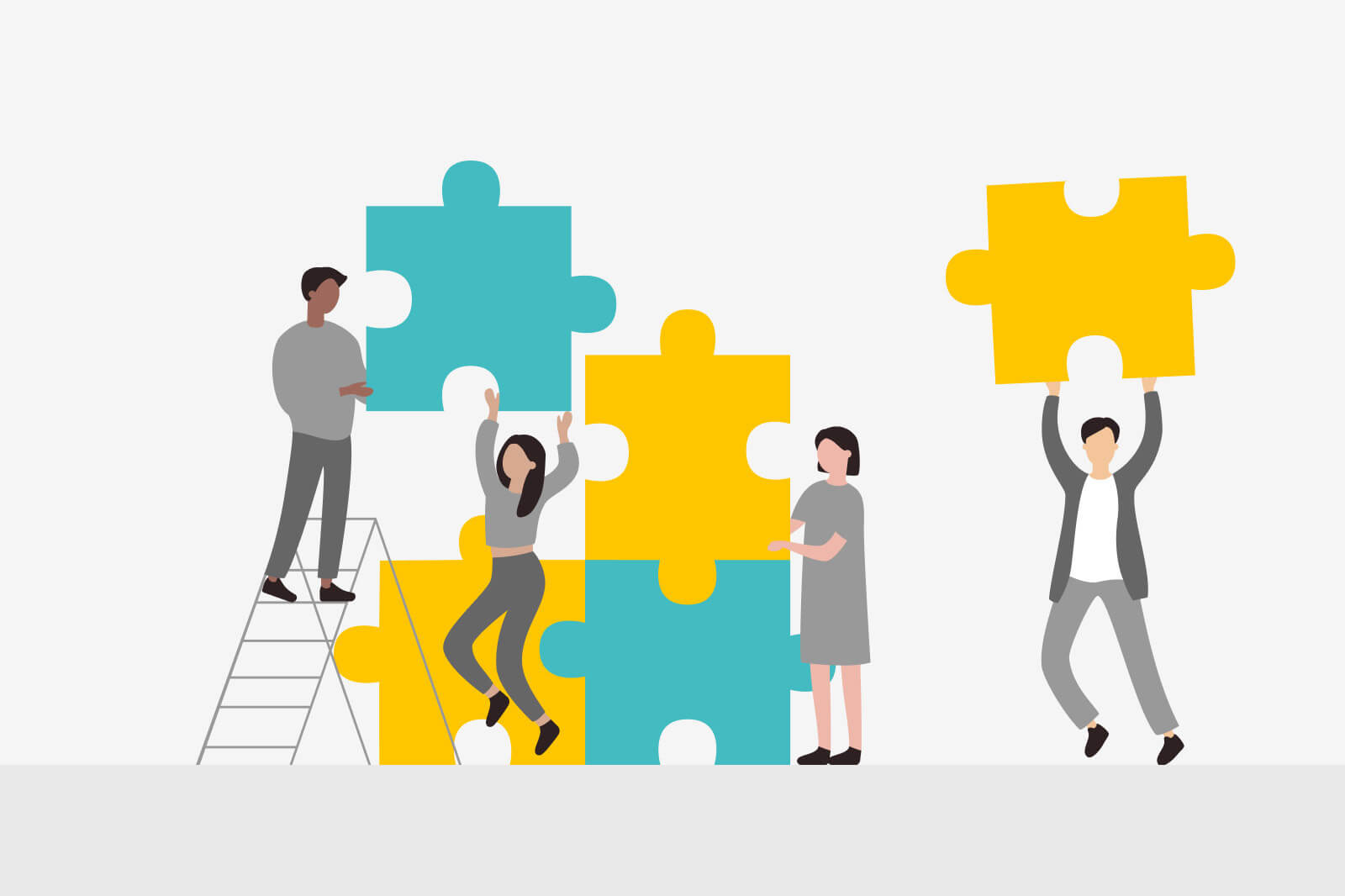Restructurings are hard, to begin with. What’s on the other side is even harder: creating or recreating team connection, psychological safety, and alignment.
At the start of 2023, I was asked to lead a newly merged team, an exciting but daunting opportunity.
This global team of 12 had already faced a series of challenges around performance and lack of clarity.
People worked in silos and didn’t collaborate effectively. They were feeling disconnected, which also took its toll on trust within the team.
Without a healthy team culture, we couldn’t possibly drive business outcomes. So we decided to prioritize building psychological safety within the team.
Over the next couple of months, we engaged the team in a series of trust-building exercises, before bringing them together in person for the first time.
Here’s what I learned from this experience: no matter how challenging the situation looks during organizational change, what we choose to prioritize and how we show up in the process is key.
In this blog, I share how we designed an offsite to increase psychological safety and build a strong team foundation.
- Building psychological safety in a distributed team
- Connecting people with purpose
- Day 1: Getting to know each other
- Day 2: Defining psychological safety within the team
- Day 3: Creating alignment through team purpose
Building psychological safety in a distributed team
With 12 mostly remote team members spread across the Americas, Europe, and Asia, this team is one of the most diverse and distributed units in Slido.
As their new lead, my first priority was to clarify what the expectations and desired outcomes were for our team. This meant understanding what the problems were and outlining a step-by-step approach to bridge the gaps.
To facilitate this process, we spent the first two months assessing: mapping the issues, getting to know the team as individuals and as a group, listening, and encouraging people to open up.
We held conversations, ran poll checks, made use of anonymous feedback, and created focus groups.
This thorough assessment was a crucial part of understanding what the team needed to get to a healthy, functioning place. For us, the top needs were:
- Creating social cohesion
- Establishing collaborative tasks
- Defining the team’s purpose and aligning on goals
- Building and maintaining trust
Based on the assessment, we identified we needed to focus on building psychological safety within the team. Our team members needed to feel safe working together, speaking up with ideas, questions, concerns, or mistakes, without having to worry about being punished or humiliated.
Connecting people with purpose
Given the specific challenges endured by our remote team, we decided to pursue a physical, in-person setting for our offsite. We set three main objectives for the offsite:
- Get to know each other’s strengths, talents, fears, and ways of working
- Build trust in the team and agree on team principles to commit to
- Align around purpose and start collaborating around common goals and projects
Last but not least, social cohesion still remained the overarching goal for us: to have fun together.
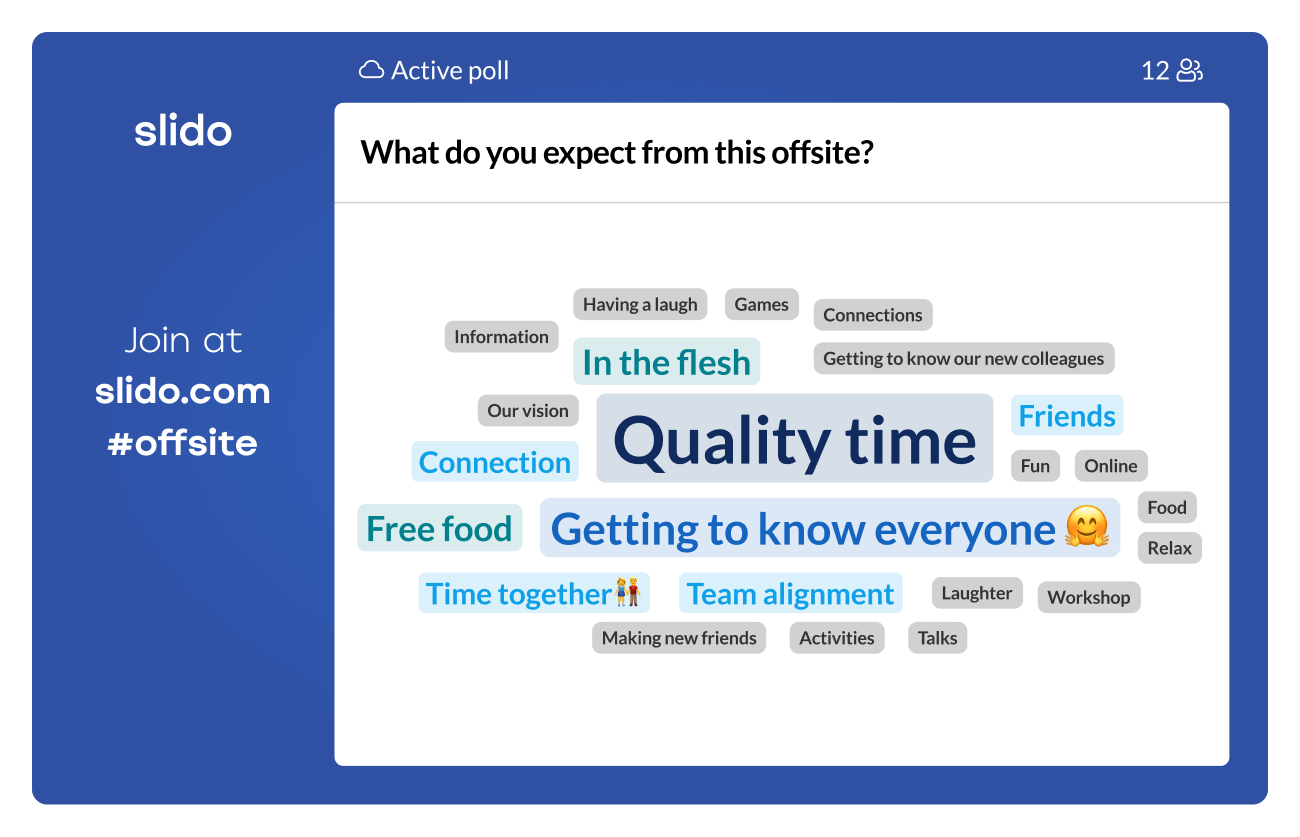
Day 1: Getting to know each other
We started with a treasure hunt so the team could learn more about each other’s working styles in a practical and tangible way.
It was both fun and it also uncovered how different people approach problem-solving or what role in the team dynamic they play. Plus, it was full of creativity! You can tailor the tasks specifically to your team.
🎁 Here’s a scavenger hunt format designed by our success team coach, Dodo Dolinka. Download it here.
In the afternoon, we switched to a serious session focused on getting to know each other’s strengths and weaknesses, preferred communication styles and ways of working, as well as how people like to receive feedback.
Our biggest learning was that people need enough time to process what they’ve learned. When planning sessions where we ask people to be vulnerable, it’s important to give them the space to digest.
Day 2: Defining psychological safety within the team
The second day was focused on building trust and creating and committing to our team principles. For this, we used Brené Brown’s BRAVING framework. We wanted this exercise to be as introspective and constructive as possible to help people understand how it all starts with each person.
The exercise had two parts:
1. Assessment of our current state of “trust”
2. Coming up with team principles that foster trust and committing to them
Using Slido was essential for both of these parts as it helped us uncover how people really feel, sparking honest and eye-opening conversations.
Assessment of our current state of ‘trust’
We wanted to encourage people to shift from thinking that creating a psychologically safe environment is up to someone else. It starts with the leader but the leader alone can’t create trust without everyone contributing.
To help each person reflect on their role in the process, we ran a Slido survey. We asked our team members to reflect and assess themselves on a scale from one to six for each of Brené Brown’s elements of trust: Boundaries, Reliability, Accountability, Vault, Integrity, Non-judgment, and Generosity.
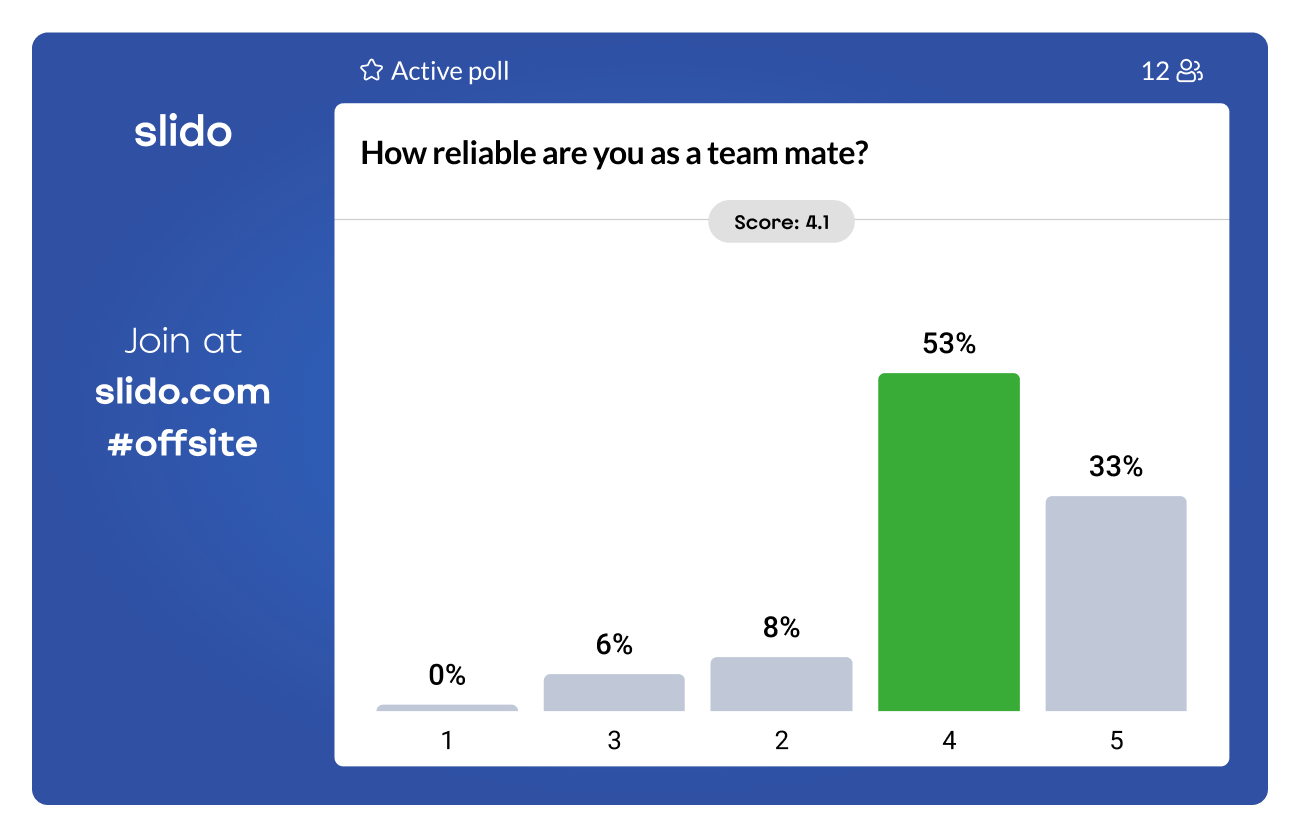
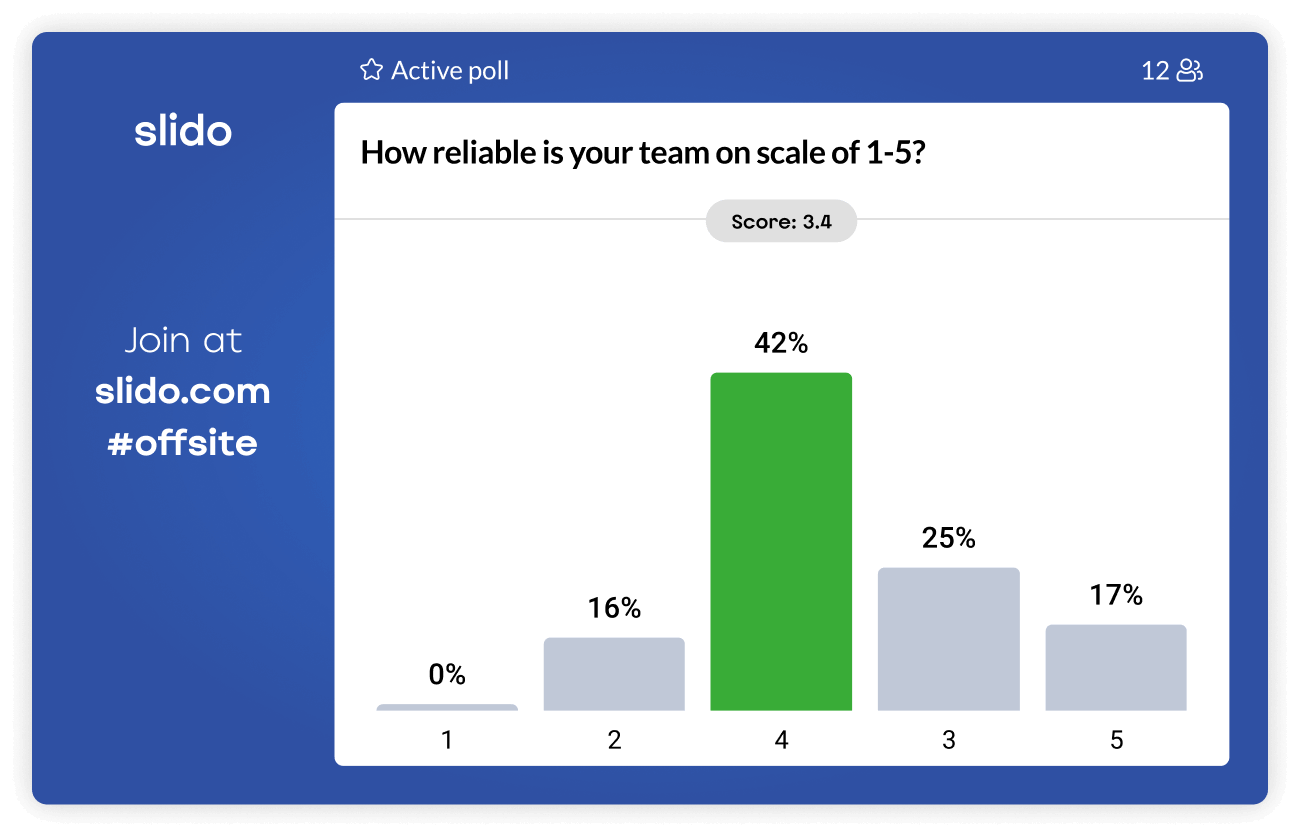
Then, we asked everyone to answer another survey, this time assessing where they think the team as a collective stands on each of those elements.
The results were fascinating and opened important conversations about where we as individuals as well as the team are doing well and where we’d like to improve.
We also learned that people judged themselves on all aspects more favorably than they judged the team. This sparked an important conversation about how we all need to do a better job at pitching in to build psychological safety and trust in the team.
Coming up with team principles that foster trust – and committing to them
We split the team into groups of three or four to discuss the principles they’d like the team to adhere to.
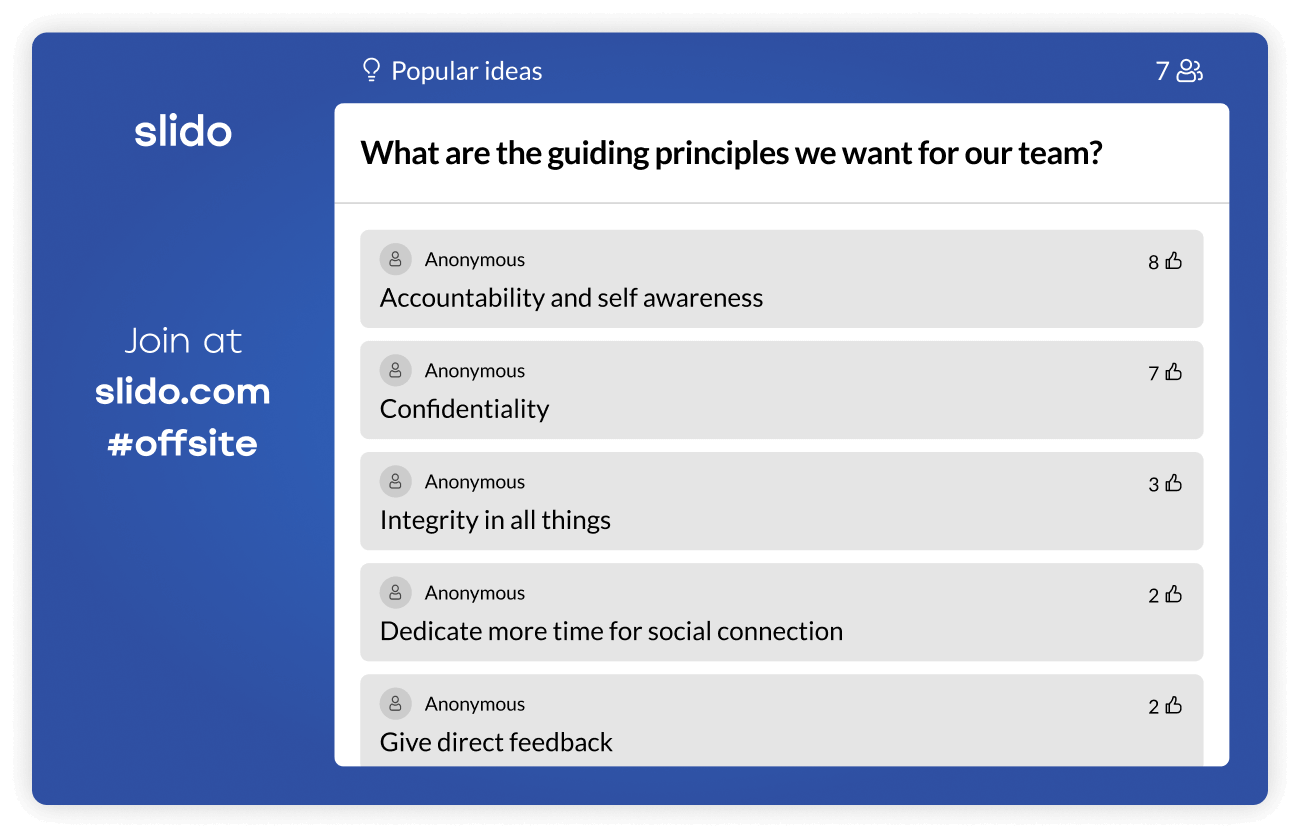
Some ideas flowed naturally from the previous exercise. The rest of it came from what their dream team would look like and act like.
We used Slido for each group to submit their ideas. Afterward, we got together and voted on those submissions. Using the upvoting feature, it became clear which top five principles people wanted to commit to.
Day 3: Creating alignment through team purpose
On our last day, we started talking about business outcomes.
We wanted to make sure we are aligned with our team’s purpose. So in the morning, we conducted an exercise where we crowdsourced ideas about what our team’s purpose should be.
We used a technique from Remote Not Distant by Gustavo Razzetti through Slido polls for this exercise.
Following are the open text poll questions we used to come up with our team principle:
- What is our job?
- Who do we work for?
- What is our impact?
With the crowdsourced answers to these questions, we were able to create something which reflected all of our ideas.
Following the team purpose session, we had a hackathon where our team members were encouraged to come up with projects. By allowing them to take the lead, we were able to build momentum within the team to design and drive projects that align well with their strengths.
Where we are today
The results of the offsite were felt immediately. At the closing of the three-day offsite, we asked people how they felt now. This is what they told us.
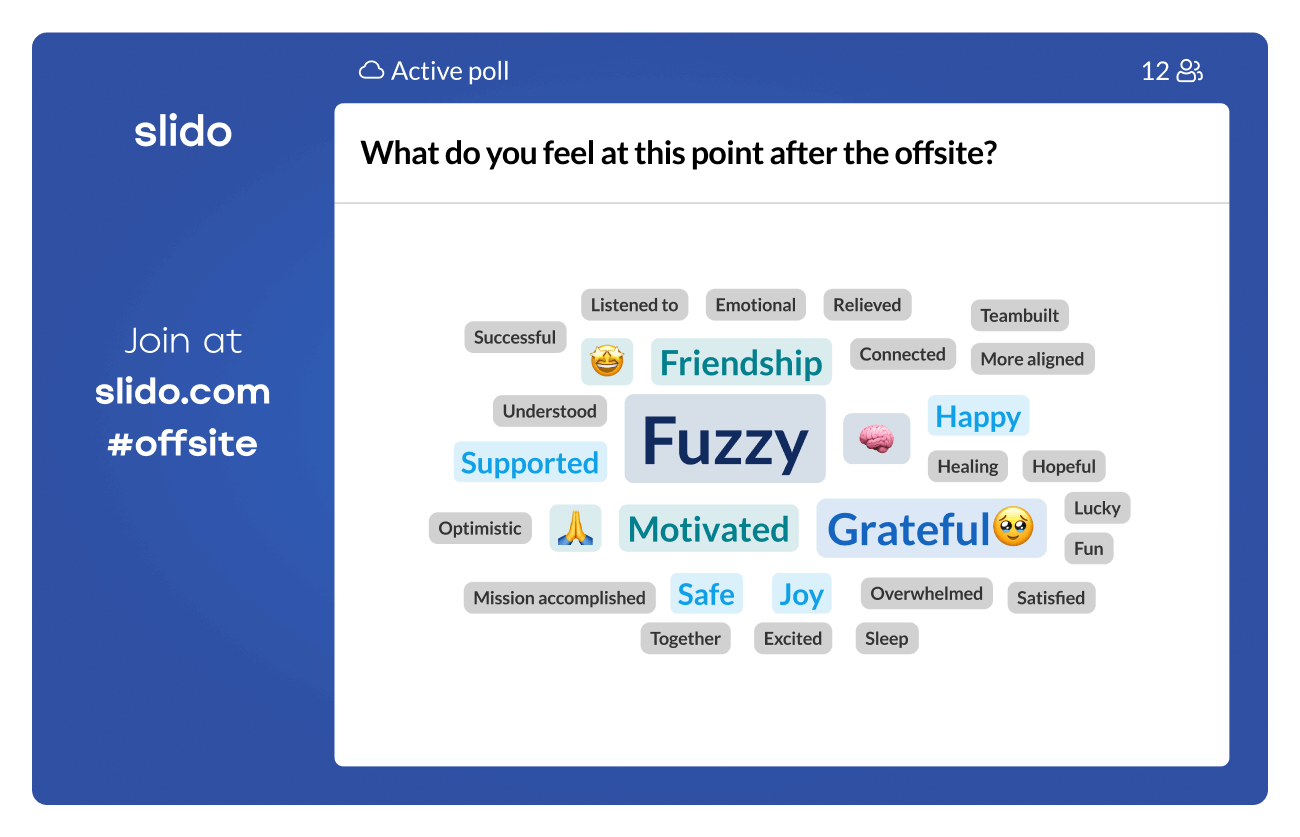
More importantly, a couple of months in, it’s made a big difference in team dynamics, communication, and performance. Ever since we started focusing on psychological safety, the team has seen unprecedented collaboration and delivered on key projects.
There are still many things to figure out, but we now have the foundation to start pushing ourselves to achieve our goals.
As the lead, I feel genuinely excited about what’s ahead of us. Without a solid foundation built on psychological safety, we would never be able to do that.
Say hello!
You’ve just read the story of the Education and Enablement team, a key player that drives Slido’s digital initiatives forward. The team is responsible for providing educational content at scale so that our users achieve their goals with Slido. We take care of everything from Help Center & Community to webinars through this blog that you’re reading right now!

